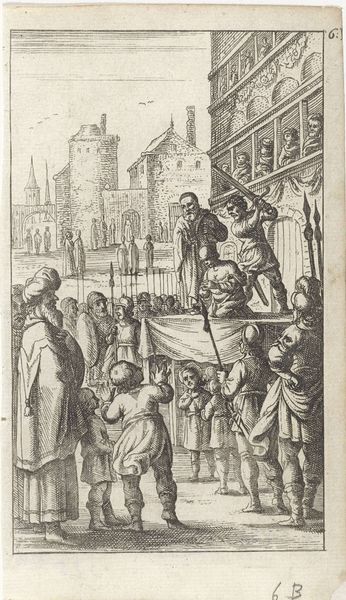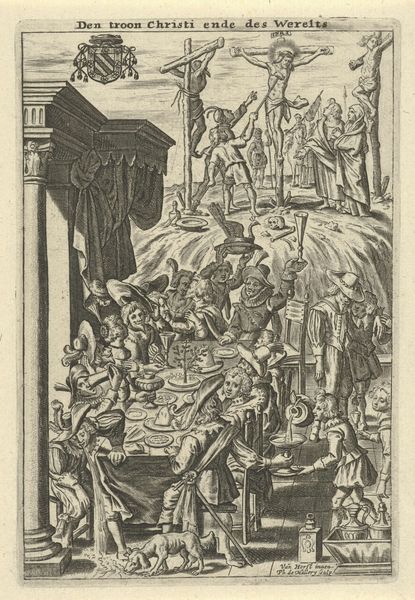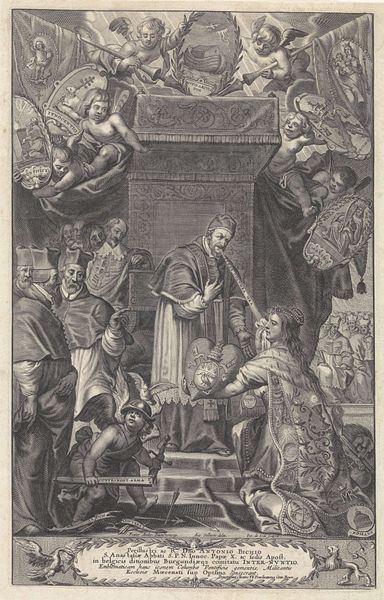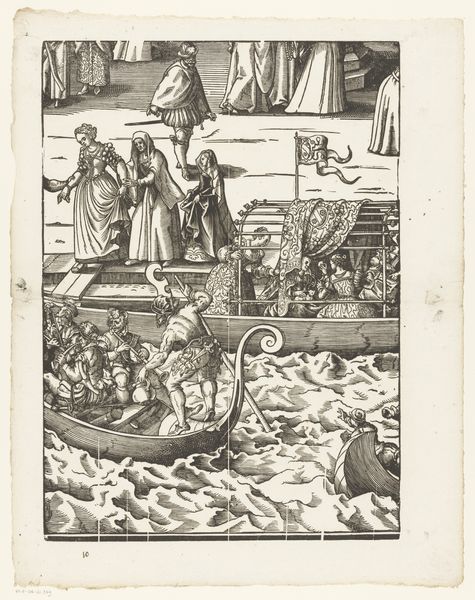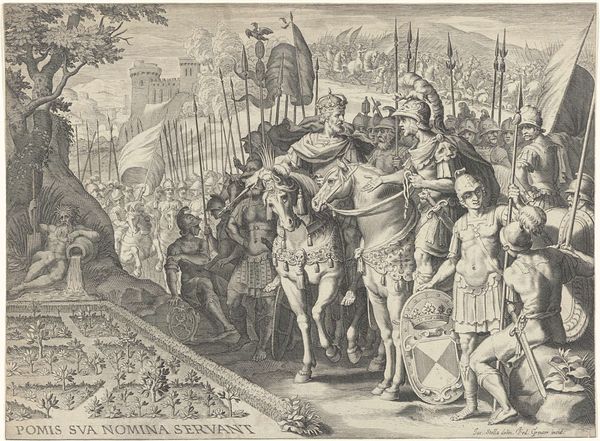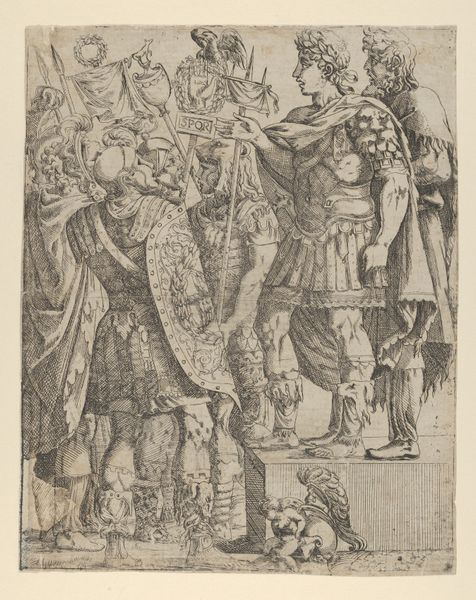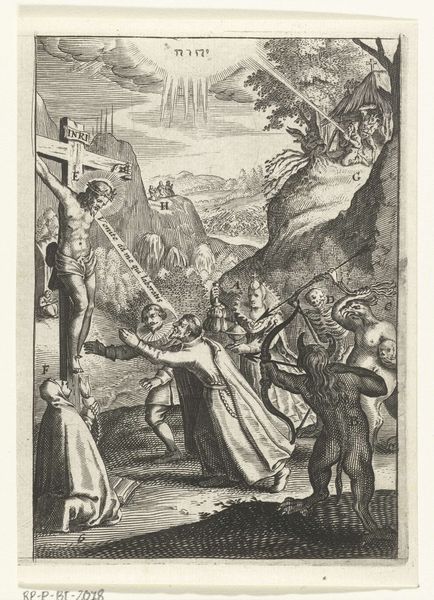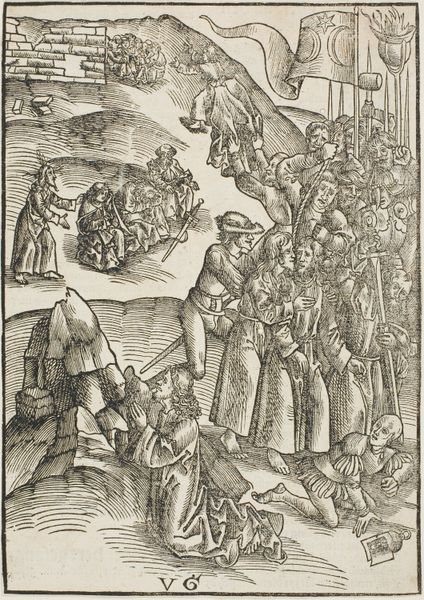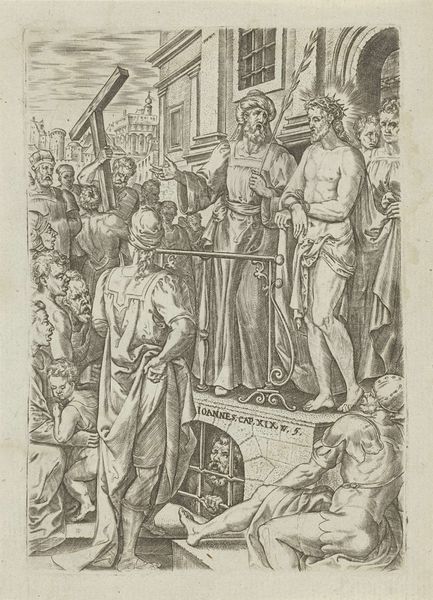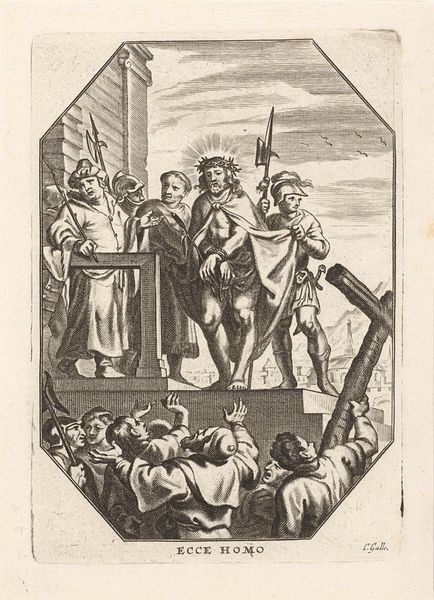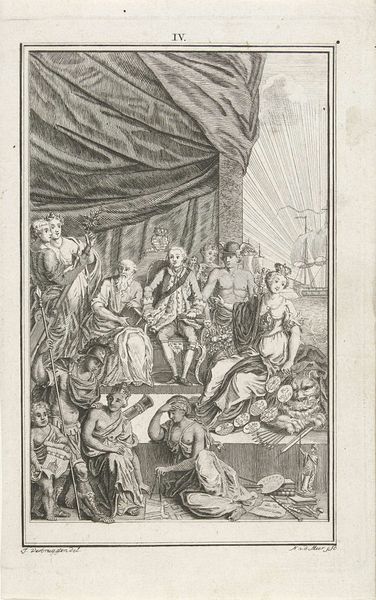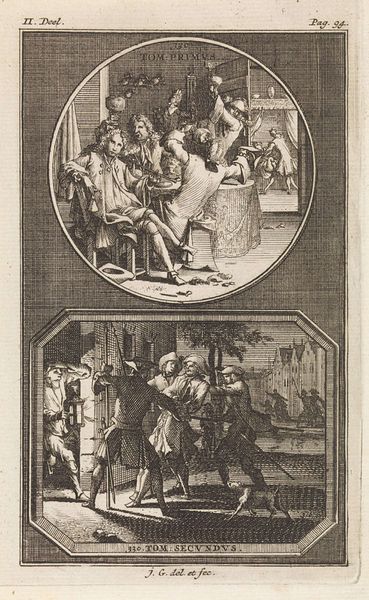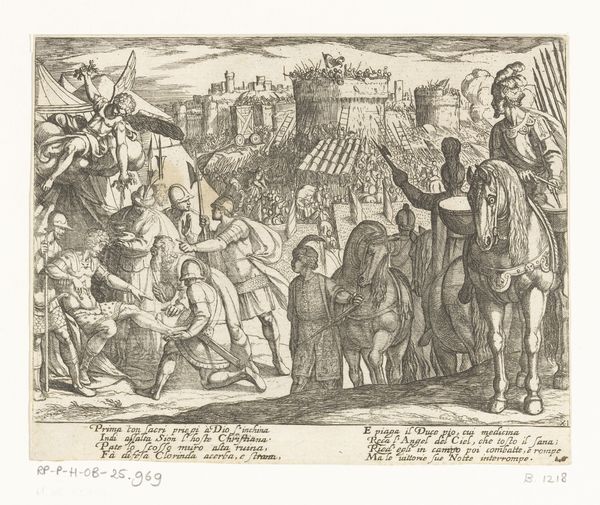
print, engraving
#
allegory
#
baroque
# print
#
pen illustration
#
old engraving style
#
classical-realism
#
figuration
#
history-painting
#
engraving
Dimensions: height 163 mm, width 106 mm
Copyright: Rijks Museum: Open Domain
Editor: This engraving from 1665 by G. Wingendorp, titled "Roman Ruler and Justice on a Chariot", caught my eye because of the sheer density of figures and symbols! There is almost a tension between classical ideals and Baroque abundance. What do you see in this piece? Curator: The image presents a complex allegorical scene embedded within specific social and institutional frameworks. The figure of Justitia, blindfolded and holding scales, is a prominent symbol of justice, of course. What is really interesting here is the context in which this symbol is presented and who would buy and promote the dissemination of the image. Editor: You mean, besides the artist himself? Curator: Exactly. The print served a broader function beyond pure aesthetics. It was produced in Leiden for a publication by Hackius and represents a statement of power and authority connected to Roman ideals in the context of Dutch printmaking and readership during the Dutch Golden Age. The central Roman ruler becomes a symbol deployed in the early days of the free press to imply an adherence to Roman rule and to the idea of law and order amid increased output, which was sometimes seen as bordering on the unruliness of ideas! What is being promoted alongside the images? What words are next to it, printed and distributed with it? Editor: Oh, that makes so much sense! I see now the text in Latin up top. So, the image really participates in promoting or legitimizing the printing house of Hackius? Curator: Precisely! And by association, legitimizes the act of publication at that moment in time. It’s a calculated move to link their work with the gravitas of Roman history and the enduring ideal of justice, not only the content itself, but a sort of truthfulness about the vehicle containing this content.. Editor: So, it's more than just an image; it’s a commentary on the very act of producing and consuming information. Fascinating. Curator: Exactly. By understanding the print within the socio-political landscape of the time, we get a clearer picture of its intended audience, message, and purpose. Editor: Thanks for that insight! I will now look at historical artwork like this through this political and societal lens.
Comments
No comments
Be the first to comment and join the conversation on the ultimate creative platform.
